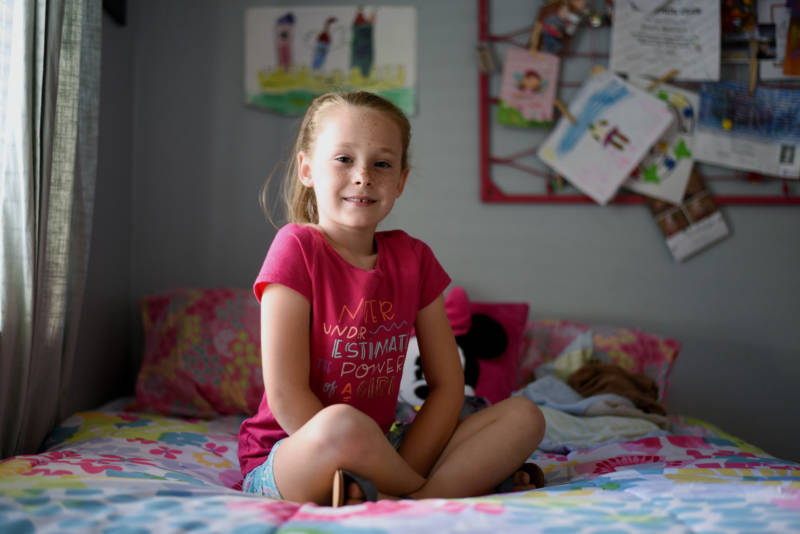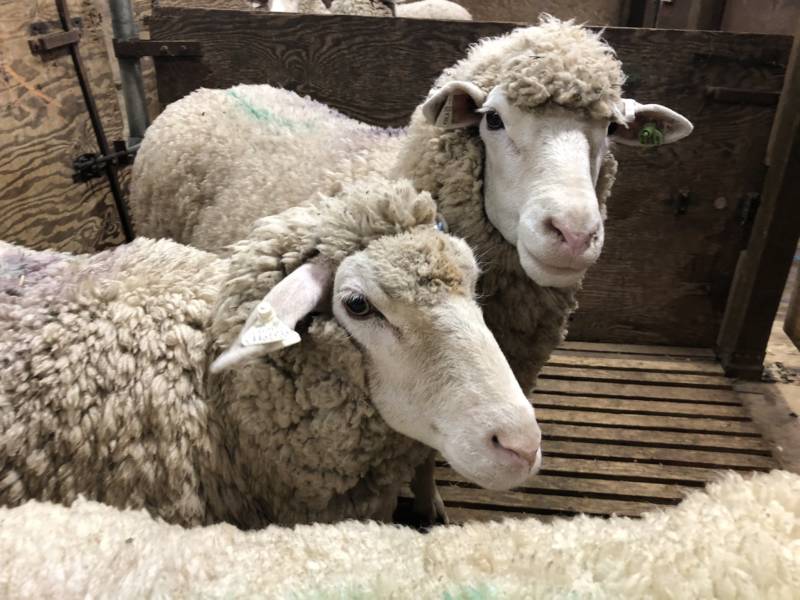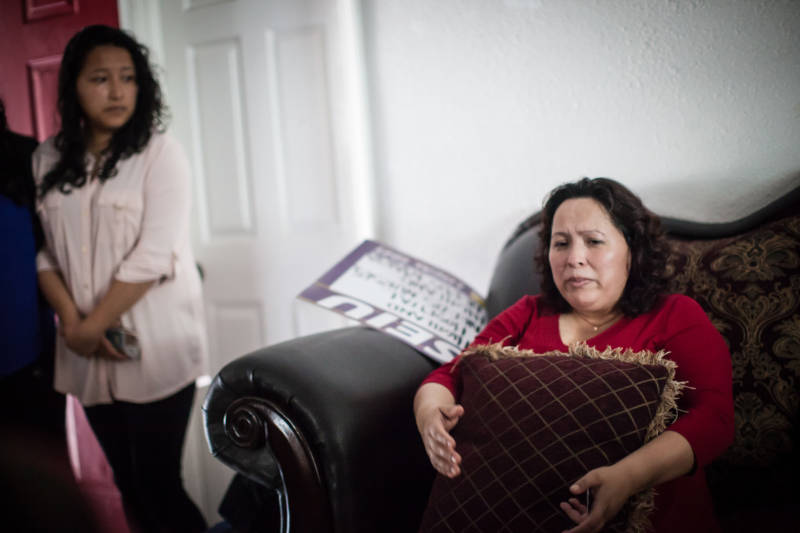Go offline with the Player FM app!
How Young is ‘Too Young’ to Know You’re Transgender?
Manage episode 206930495 series 1393026
Stay caught up with the best of KQED’s reporting each week by subscribing to the Q’ed Up podcast.
Unlike the North Korea summit, all of this stuff definitely happened.
1. Are 3-year-olds too young to socially transition? Transgender researchers disagree

Gracie is like a lot of seven-year-old girls: She likes pink, dresses and Frozen. She’s also transgender.
She started socially transitioning at age four — her family started calling her Gracie, changed her pronouns, let her wear girl clothes outside of the house and changed the gender on her birth certificate.
KQED’s Jon Brooks spent some time with Gracie and her mom as part of a deeper dive into a controversial issue in the transgender and medical communities: When should kids be allowed to start socially transitioning?
One group follows what they call the “gender affirmative” model. Basically, if a kid is insistent that they’re not the gender everyone says they are, adults should listen to them and support them.
On the other side are researchers who cite disputed research that shows the majority of young kids who say they’re transgender don’t stick with that identity through adolescence. They advocate supporting a kid’s ability to express themselves how they wish, while avoiding more lasting changes like pronoun or name changes.
At the center of this debate are kids like Gracie. Her mom says that since she’s started transitioning, she has become much happier.
“Now she gets to really live,” she says.
2. When guns become art in Oakland

Art is regularly used as way to make a statement on social issues like gun violence, but I’ve never seen an exhibit quite like “Art of Peace.”
It features art made out of hundreds of confiscated and dismantled guns provided by the Alameda County District Attorney’s office to local artists like Natasha McCray-Zolp who, along with her husband, created a bicycle with handgun pedals and a shell-casing seat.
“It dawned on me that I was looking down two double barrel shotguns,” McCray-Zolp said about the process of making her piece. “And I thought, you know, these quite possibly could have been pointed at somebody in this way before.”
3. No baaaaaaaad haircuts here

It turns out that giving a sheep a haircut is a lot like dancing.
“We’re dancing instructors,” says John Harper, head of the UC Cooperative Extension Sheep Shearing School in the Mendocino County town of Hopland. “It’s like ‘Dancing With The Stars’ on steroids, but with sheep.”
Apparently there’s a worldwide shortage of sheep shearers and hundreds of thousands of sheep just in California that need their wool shaved off. Enter Harper’s sheep shearing school, which has been training new baaaaaarbers for about 25 years.
4. How do you keep parenting your kids after you’ve been deported?

Being a working parent of four kids in the Bay Area is hard enough. Now imagine that your kids live in Oakland, while you and your spouse live in Mexico, legally barred from reconnecting with them in the United States.
That’s the life Maria Mendoza and her husband Eusebio have been living for the last nine months since they were deported as part of the Trump administration’s crackdown on undocumented immigrants.
Their two oldest daughters are putting their educational ambitions aside to take care of their younger siblings, while Maria and Eusebio try to send what little money they can and do their parenting over daily video chats.
5. Remembering a Warriors superhero
https://twitter.com/warriors/status/997193788882866178
I’ve always had a soft spot for professional sports mascots and the people who make them come alive.
We have a strong mascot culture in Minnesota where I grew up including the home run hitting TC Bear, the do-it-all Goldy the Gopher and the high-flying, slam-dunking Crunch.
So even though I had never seen Sadiki Fuller perform as the Warriors’ mascot Thunder in the late 90s and early 2000s, I felt an immediate respect and admiration for the man while reading Pendarvis Harshaw’s heartfelt tribute. Like many mascots, his presence wasn’t just felt on the court or field hyping up the fans, but in the community where he brought joy and mentorship to so many.
103 episodes
Manage episode 206930495 series 1393026
Stay caught up with the best of KQED’s reporting each week by subscribing to the Q’ed Up podcast.
Unlike the North Korea summit, all of this stuff definitely happened.
1. Are 3-year-olds too young to socially transition? Transgender researchers disagree

Gracie is like a lot of seven-year-old girls: She likes pink, dresses and Frozen. She’s also transgender.
She started socially transitioning at age four — her family started calling her Gracie, changed her pronouns, let her wear girl clothes outside of the house and changed the gender on her birth certificate.
KQED’s Jon Brooks spent some time with Gracie and her mom as part of a deeper dive into a controversial issue in the transgender and medical communities: When should kids be allowed to start socially transitioning?
One group follows what they call the “gender affirmative” model. Basically, if a kid is insistent that they’re not the gender everyone says they are, adults should listen to them and support them.
On the other side are researchers who cite disputed research that shows the majority of young kids who say they’re transgender don’t stick with that identity through adolescence. They advocate supporting a kid’s ability to express themselves how they wish, while avoiding more lasting changes like pronoun or name changes.
At the center of this debate are kids like Gracie. Her mom says that since she’s started transitioning, she has become much happier.
“Now she gets to really live,” she says.
2. When guns become art in Oakland

Art is regularly used as way to make a statement on social issues like gun violence, but I’ve never seen an exhibit quite like “Art of Peace.”
It features art made out of hundreds of confiscated and dismantled guns provided by the Alameda County District Attorney’s office to local artists like Natasha McCray-Zolp who, along with her husband, created a bicycle with handgun pedals and a shell-casing seat.
“It dawned on me that I was looking down two double barrel shotguns,” McCray-Zolp said about the process of making her piece. “And I thought, you know, these quite possibly could have been pointed at somebody in this way before.”
3. No baaaaaaaad haircuts here

It turns out that giving a sheep a haircut is a lot like dancing.
“We’re dancing instructors,” says John Harper, head of the UC Cooperative Extension Sheep Shearing School in the Mendocino County town of Hopland. “It’s like ‘Dancing With The Stars’ on steroids, but with sheep.”
Apparently there’s a worldwide shortage of sheep shearers and hundreds of thousands of sheep just in California that need their wool shaved off. Enter Harper’s sheep shearing school, which has been training new baaaaaarbers for about 25 years.
4. How do you keep parenting your kids after you’ve been deported?

Being a working parent of four kids in the Bay Area is hard enough. Now imagine that your kids live in Oakland, while you and your spouse live in Mexico, legally barred from reconnecting with them in the United States.
That’s the life Maria Mendoza and her husband Eusebio have been living for the last nine months since they were deported as part of the Trump administration’s crackdown on undocumented immigrants.
Their two oldest daughters are putting their educational ambitions aside to take care of their younger siblings, while Maria and Eusebio try to send what little money they can and do their parenting over daily video chats.
5. Remembering a Warriors superhero
https://twitter.com/warriors/status/997193788882866178
I’ve always had a soft spot for professional sports mascots and the people who make them come alive.
We have a strong mascot culture in Minnesota where I grew up including the home run hitting TC Bear, the do-it-all Goldy the Gopher and the high-flying, slam-dunking Crunch.
So even though I had never seen Sadiki Fuller perform as the Warriors’ mascot Thunder in the late 90s and early 2000s, I felt an immediate respect and admiration for the man while reading Pendarvis Harshaw’s heartfelt tribute. Like many mascots, his presence wasn’t just felt on the court or field hyping up the fans, but in the community where he brought joy and mentorship to so many.
103 episodes
All episodes
×Welcome to Player FM!
Player FM is scanning the web for high-quality podcasts for you to enjoy right now. It's the best podcast app and works on Android, iPhone, and the web. Signup to sync subscriptions across devices.




